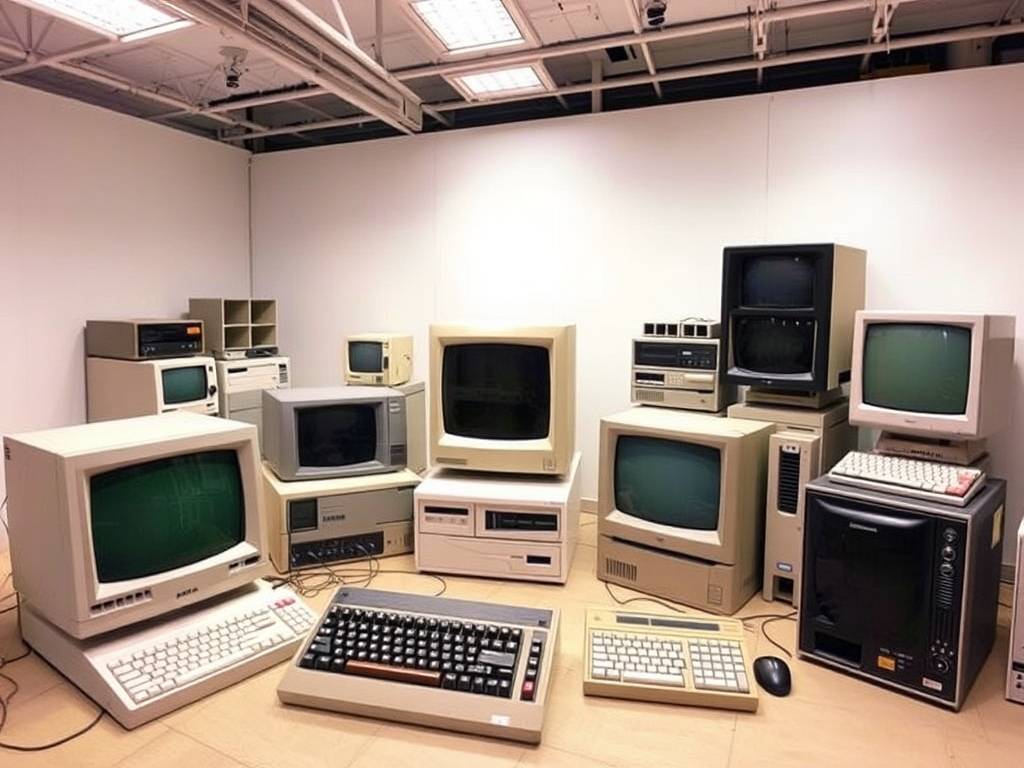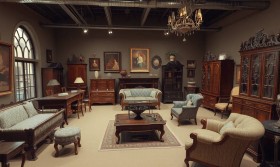Time Travel in the Digital Age: Exploring the Vintage PCs Expansion at the Computer Museum VR
Close your eyes for a moment and try to remember. The distinct, heavy clunk of a mechanical keyboard. The low, guttural whir of a cooling fan straining under the load of a simple processor. The faint, warm smell of ozone and heated plastic emanating from a cathode-ray tube monitor. For many, these are the sensory ghosts of a bygone era, memories of our first tentative steps into the digital world. But what if you could not just remember, but truly return? What if you could reach out and touch that beige box again, not as a dusty relic behind a velvet rope, but as a living, breathing piece of interactive history?
This is the promise fulfilled by the Computer Museum VR, and its latest, most ambitious update: the Vintage PCs Expansion. This isn't just an addition; it's a digital archaeological dig, a lovingly crafted portal to the dawn of the personal computing revolution. The core museum experience already allows you to walk among towering mainframes and early minicomputers, but this expansion zooms in on the machines that truly brought computing into our homes, schools, and offices. It’s a journey designed for the nostalgic enthusiast, the curious historian, and a new generation eager to understand where their sleek laptops and powerful smartphones came from.

So, what exactly awaits you in this new wing? Let's power up and explore.
Upon entering the expansion, you find yourself in a beautifully rendered 1980s or 1990s study. Sunlight streams through a virtual window, illuminating a particle-board desk. On it sits not just one, but a collection of iconic machines, each a gateway to a different chapter in computing history. This is the heart of the experience: the interactive vintage computer collection. You are not a passive observer here. You are the user.
Walk up to the legendary Commodore 64. You can press the power switch, hear the satisfying click, and watch the screen flicker to life with its iconic blue border and ready prompt. The keyboard is fully functional. You can load up a classic game cartridge, hearing the digital chirps and bloops of the SID chip as you play. This is the essence of historical computer simulation—it’s not just about seeing the machine, but about understanding its interface, its speed, its unique personality.
Next to it, you might find an original IBM Personal Computer 5150. You can lift the heavy metal case (with a satisfying haptic feedback rumble from your VR controllers), peer inside at the rudimentary motherboard, and even attempt to slot in an expansion card. This level of hands-on retro tech education demystifies these machines. You learn, through direct interaction, why RAM was so precious and storage so limited. It’s a masterclass in preserving vintage computing history through immersive digital means.
But the expansion goes far beyond a simple showcase. The true magic lies in its curated "scenarios" or "quests." These are guided experiences that solve a common problem for modern users: "I can see the old computer, but what did people actually do with it?" One scenario might place you in the role of a 1980s student tasked with writing a report. You’ll need to boot the machine from a 5.25-inch floppy disk (a physical motion you perform in VR), navigate a command-line interface like MS-DOS to load WordPerfect 5.1, and remember to save your work diligently. The frustration and triumph of this process are more educational than any textbook description.

Another scenario might focus on the early days of PC gaming. You’ll experience the pixelated glory of games like King's Quest or The Oregon Trail, not through a soulless emulator, but on the "original" hardware. You feel the limitations of the joystick, appreciate the ingenuity required to create compelling stories with 16 colors, and understand why sound cards like the AdLib and Sound Blaster were such revolutionary upgrades. This is a key part of the virtual reality computer history lesson—context is everything.
For those interested in the evolution of computer hardware, a dedicated "Timeline Wall" allows you to witness the progression side-by-side. You can see the transition from the Apple II's open architecture to the compact, all-in-one design of the original Macintosh 128K. You can compare the command-line interface of early PCs with the groundbreaking, if rudimentary, graphical user interface of a system like GEOS. This direct comparison makes abstract concepts tangible, answering the "why" behind design changes.
A particularly innovative feature is the "Tech Specs Holo-Lens." By focusing on any component inside a virtually disassembled computer, you can pull up a detailed, easy-to-understand overlay explaining its function. What is a Zilog Z80 processor, and how does it differ from an Intel 8088? What did early RAM look like, and how much data could it actually hold? This tool transforms the experience from a simple museum tour into a deep dive into retrocomputing in virtual reality, empowering you with knowledge.
Perhaps the most socially engaging aspect is the multi-user functionality. You can visit the Vintage PCs Expansion with friends. Imagine collaboratively debugging a simple BASIC program on a Tandy TRS-80 with a friend who is physically on the other side of the world, or competing in a multiplayer game of Digger on original IBM PC compatibles. This shared experience fosters a sense of community and makes exploring classic computers in VR a collective, joyful activity. It’s a powerful tool for interactive technology heritage projects, allowing people to connect over shared digital history.
The Vintage PCs Expansion successfully addresses a critical gap in our understanding of technology. We live in an age of abstraction, where our devices are sleek, sealed boxes. We have lost the tangible connection to the machinery that powers our lives. This VR experience rebuilds that connection. It answers the questions of "how did we get here?" by letting you live the answer. It preserves not just the software, but the physicality, the sounds, the pace, and the culture of early personal computing.
It’s more than a museum exhibit; it’s a time machine. It’s a love letter to the clunky, beige boxes that started it all, and an essential educational resource for anyone who wants to understand the humble, noisy, and glorious beginnings of the digital age. So, put on your headset, power up the machine, and prepare to be transported. The past has never felt so present.


















